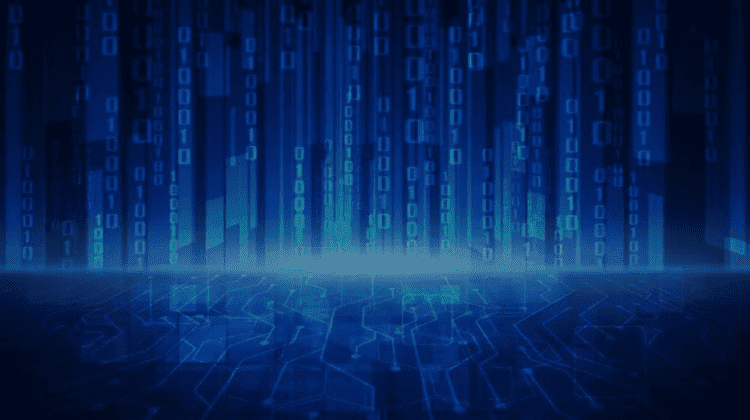Moral Machines: The Importance of Ethics in Generative AI

A transparent model can provide better functionality than an opaque model, as it
provides users with explanations for its outputs. An opaque model does not need
to explain its reasoning process, which introduces risk and potential liability
if unexpected or inaccurate results are provided by a generative AI tool. This
lack of visibility also makes opaque models more difficult to test than their
transparent counterparts. As such, it’s important to consider generative AI
tools with high transparency when working to build ethical systems.
Explainability of AI models is another important aspect of creating ethical
systems yet challenging to control. AI models, specifically deep learning
models, use thousands upon thousands of parameters when creating an output. This
type of process can be nearly impossible to track from beginning to end, which
limits user visibility. Lack of explainability has already been demonstrated in
real-world problems; we’ve seen many examples of AI hallucinations, such as the
Bard chatbot error in February 2023, which occurs when a model provides an
output that is entirely false or implausible.
12 Software Architecture Pitfalls and How to Avoid Them
Reusing an existing architecture is seldom successful unless the QARs for the
new architecture match the ones that an existing architecture was designed to
meet. Past performance is no guarantee of future success! Reusing part of an
existing application to implement an MVP rapidly may constrain its associated
MVA by including legacy technologies in its design. Extending existing
components in order to reuse them may complicate their design and make their
maintenance more difficult and therefore more expensive. ... Architectural
work is problem-solving, with the additional skill of being able to make
trade-offs informed by experience in solving particular kinds of problems.
Developers who have not had experience solving architectural problems will
learn, but they will make a lot of mistakes before they do. ... While new
technologies offer interesting capabilities, they always come with trade-offs
and unintended side effects. The new technologies don’t fundamentally or
magically make meeting QARs unimportant or trivial; in many cases the ability
of new technologies to meet QARs is completely unknown.
CIOs weigh the new economics and risks of cloud lock-in

“It is true that hyperscale cloud providers have hit such a critical mass that
they create their own gravitational pull,” he says. “Once you adopt their
cloud platforms, it can be difficult and expensive to migrate out. [But] CIOs
today have more choice in cloud providers than ever. It is no longer a
decision between AWS and Azure. Google has been successfully executing a
strategy to attract more enterprise customers. Even Oracle has made the
transition from focusing on in-house technology to become a full-service cloud
provider.” CIOs may consider other approaches, McCarthy adds, such as
selecting a single-tenant cloud solution offered by HPE or Dell, which bundle
hardware and software in an as-a-service business model that gives CIOs more
cloud options. “Another alternative includes colocation companies like
Equinix, which has been offering bare-metal IaaS for several years and has now
created a partnership with VMware to extend those services higher up the
stack,” he says, adding that CIOs should not view a cloud provider “as a
location but rather as an operating model that can be deployed in service
provider data centers, on-premise, or at the edge.”
Understanding the True Cost of a Data Breach in 2023
Data breaches are common in the modern world, which means even if your
organization hasn’t suffered one, the chances of it happening aren’t
negligible. Criminal groups stand to profit significantly from these actions,
so they are innovative and invest time and money to conduct highly advanced
attacks. This means that a data breach doesn’t simply appear one second and
then disappear the next. An IBM report noted the average breach cycle lasts
for 287 days, with businesses taking 212 days to detect it and an additional
75 to neutralize the threat. Every organization should implement preventative
measures to combat threat actors. This means building and exercising safe
practices, like storing information securely, adhering to clear policies and
training staff to understand data protection. Ultimately, the longer a breach
continues, the more expensive it becomes. The Cost of a Data Breach Report
2023 found that companies that contain a breach within 30 days save over $1
million in contrast to those that take longer, so it pays to have a strong
recovery process in place.
Fortifying confidential computing in Microsoft Azure

Adding GPU support to confidential VMs is a big change, as it expands the
available compute capabilities. Microsoft’s implementation is based on Nvidia
H100 GPUs, which are commonly used to train, tune, and run various AI models
including computer vision and language processing. The confidential VMs allow
you to use private information as a training set, for example training a
product evaluation model on prototype components before a public unveiling, or
working with medical data, training a diagnostic tool on X-ray or other
medical imagery. Instead of embedding a GPU in a VM, and then encrypting the
whole VM, Azure keeps the encrypted GPU separate from your confidential
computing instance, using encrypted messaging to link the two. Both operate in
their own trusted execution environments (TEE), ensuring that your data
remains secure. Conceptually this is no different from using an external GPU
over Thunderbolt or another PCI bus. Microsoft can allocate GPU resources as
needed, with the GPU TEE ensuring that its dedicated memory and configuration
are secured.
From reactive to proactive: Always-ready CFD data center analysis
By synchronizing with these toolsets, digital twin models can pull all
relevant, necessary data and update accordingly. The data includes objects on
the floor plan, assets in the racks, power chain connections, historical
power, and environmental readings, and perforated tile and return grate
locations. Therefore, the digital twin model is always ready to run the next
predictive scenario with current data and minimal supervision from the
operational team. As part of the routine output from the software, DataCenter
Digital Twin produces Excel-ready reports, capacity dashboards, CFD reports,
and go/no-go planning analysis. Teams can then use this information to
evaluate future capacity plans, conduct sensitivity studies (such as redundant
failure or transient power failure), and run energy optimization studies as
needed. Much of this functionality is available through an intuitive and
accessible web portal. We know that every organization has a unique set of
problems, priorities, and workflows. As such, we’ve split DataCenter Insight
Platform into two offerings – DataCenter Asset Twin and DataCenter Digital
Twin.
AI-Powered Encryption: A New Era in Cybersecurity

AI-powered encryption represents a groundbreaking advancement in
cybersecurity, leveraging the capabilities of artificial intelligence to
strengthen data protection. At its core, AI-powered encryption utilizes
machine learning algorithms to continuously analyze and adapt to new cyber
threats, making it an incredibly dynamic and proactive defense mechanism. By
employing AI-driven pattern recognition and predictive analytics, this
encryption method can rapidly identify potential vulnerabilities and create
tailored encryption protocols to thwart would-be attackers. One key aspect of
AI-powered encryption is its ability to autonomously adjust security
parameters in real-time based on evolving risk factors. This adaptability
ensures that data remains secure even as cyber threats become more
sophisticated. Moreover, the integration of AI enables encryption systems to
swiftly detect anomalies or suspicious activities within the network,
providing an extra layer of defense against unauthorized access or data
breaches.
7 Best Practices for Developers Getting Started with GenAI

Experiment (and encourage your team to experiment) with GenAI tools and
code-gen solutions, such as GitHub Copilot, which integrates with every
popular IDE and acts as a pair programmer. Copilot offers programmers
suggestions, helps troubleshoot code and generates entire functions, making it
faster and easier to learn and adapt to GenAI. A word of warning when you
first use these off-the-shelf tools: Be wary of using proprietary or sensitive
company data, even when just feeding the tool a prompt. Gen AI vendors may
store and use your data for use in future training runs, a major no-no for
your company’s data policy and info-security protocol. ... One of the first
steps to deploying GenAI well is to master writing prompts, which is both an
art and a science. While prompt engineer is an actual job description, it’s
also a good moniker for anyone looking to improve their use of AI. A good
prompt engineer knows how to develop, refine and optimize text prompts to get
the best results and improve the overall AI system performance. Prompt
engineering doesn’t require a particular degree or background, but those doing
it need to be skilled at explaining things well.
Could Your Organization Benefit from Hyperautomation?

Building a sophisticated hyperautomation ecosystem requires a significant
technology investment, Manders says. “Additionally, the integration of
multiple technologies and tools, inherent in hyperautomation, can usher in
increased complexity, making ecosystem maintenance a challenging endeavor.”
Failing to establish clear goal and governance guidelines can also create
serious challenges. Automation without governance could lead individual
departments to create their own automation processes, which may conflict with
other departments’ processes. The resulting hyperautomation silos could lead
to some departments failing to take advantage of solutions fellow departments
have already deployed. Additionally, every time an organization transports
data to another process or platform, there’s the risk of data leaks. “If we
don’t follow best practices and ensure that data is secure, this information
could fall into the wrong hands,” Rahn warns. Hyperautomation may also lead
adopters to dependency on a particular vendor’s ecosystem of tools and
technologies.
How insurtech is using artificial intelligence

As insurers look to become more customer centric, the coupling of AI with
advanced analytics can help provide a more specific, personalised and
real-time picture of insurance customers. With insurance customers coming to
rely on online platforms for purchasing and managing their policies for such a
particular commodity, interactions with the firms themselves are few and far
and between, which can water down the user experience. However, experience
orchestration — the leveraging of customer data and AI by insurance companies
to create highly personalised interactions — can be implemented to improve
relations long-term. Manan Sagar, global head of insurance at Genesys,
explains ... This approach not only improves the customer experience but also
enhances employee efficiency by automating tasks or routing calls more
effectively. “As the insurance industry navigates the digital age, experience
orchestration can serve as a powerful tool to uphold the tradition of trust
and personal relationships that have long defined the industry. Through this,
firms can differentiate themselves in an increasingly commoditised market and
ensure their customers remain loyal and satisfied.”
Quote for the day:
"A true leader always keeps an element
of surprise up his sleeve which others cannot grasp but which keeps his
public excited and breathless." -- Charles de Gaulle
No comments:
Post a Comment